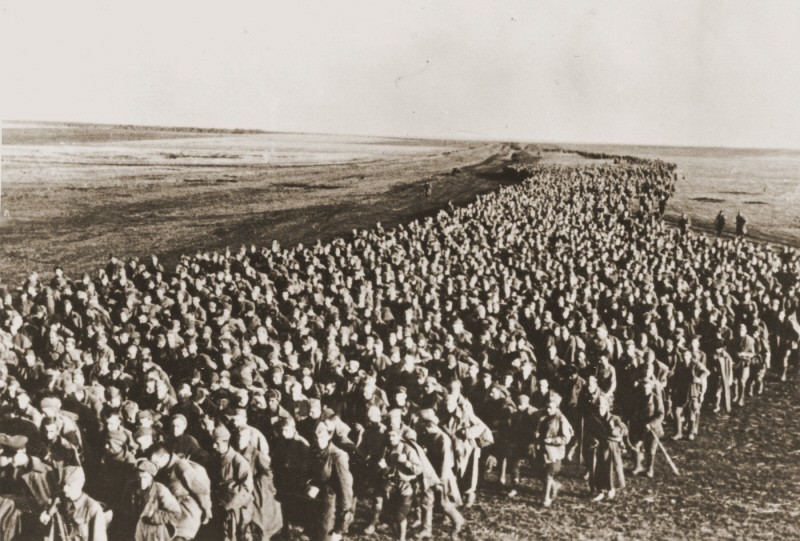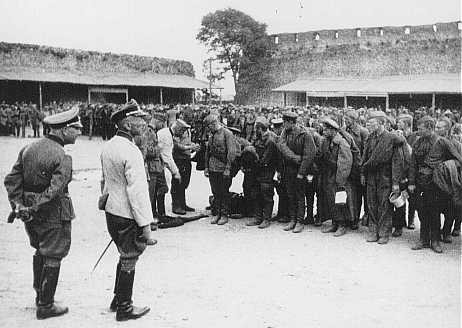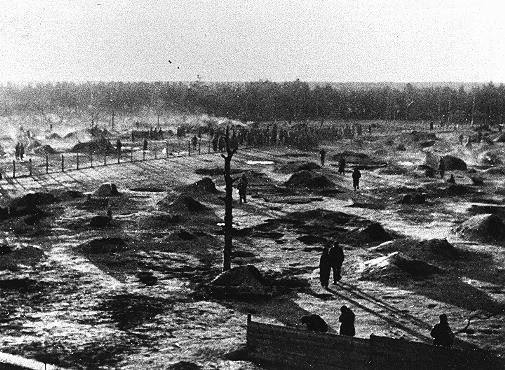
Nazi Persecution of Soviet Prisoners of War
On June 22, 1941, German forces invaded the Soviet Union. Three million German soldiers were reinforced by Finnish, Romanian, Hungarian, Italian, Slovak, and Croatian troops. Within weeks, German divisions conquered the Baltic republics of Latvia, Lithuania, and Estonia. In September the Germans laid siege to Sevastopol and Leningrad, and by late October, the cities of Minsk, Smolensk, Kiev, Odessa, and Kharkov had fallen. Millions of Soviet soldiers were encircled, cut off from supplies and reinforcements, and forced to surrender.
Soviets Viewed as Subhuman Enemies

Yet for Nazi Germany this attack was not an "ordinary" military operation. The war against the Soviet Union was a war of annihilation between German fascism and Soviet communism; a racial war between German "Aryans" and subhuman Slavs and Jews. From the very beginning this war of annihilation against the Soviet Union included the killing of prisoners of war (POWs) on a massive scale. In part, German officials excused their ill treatment and murder of Soviet POWs by pointing out that the Soviet Union was not a signatory to the Geneva Convention and its soldiers did not warrant the protection that the convention extended to prisoners of war. In reality, their reasons were more complex. German authorities viewed Soviet POWs as a particular threat, regarding them not only as Slavic subhumans but as part of the "Bolshevik menace" linked in Nazi ideology to the concept of a “Jewish conspiracy.”
Second Largest Group of Nazi Victims
The brutal treatment of Soviet POWs by the Germans violated every standard of warfare. Existing sources suggest that some 5.7 million Soviet army personnel fell into German hands during World War II. As of January 1945, the German army reported that only about 930,000 Soviet POWs remained in German custody. The German army released about one million Soviet POWs as auxiliaries of the German army and the SS. About half a million Soviet POWs had escaped German custody or had been liberated by the Soviet army as it advanced westward through eastern Europe into Germany. The remaining 3.3 million, or about 57 percent of those taken prisoner, were dead by the end of the war. Second only to the Jews, Soviet prisoners of war were the largest group of victims of Nazi racial policy.

Deliberate Policy
This death toll was neither an accident nor an automatic result of the war. It was a deliberate policy of the Nazi state. German treatment of Soviet POWs differed dramatically from German policy towards POWs from Britain and the United States, countries the Nazis regarded as racial equals to the Germans. Of the 231,000 British and American prisoners held by the Germans during the war only about 8,300—3.6 percent—died in German custody.
Critical Thinking Questions
- How did the treatment of Soviet prisoners of war illustrate Nazi ideological beliefs?
- Why did the Germans treat the Soviet POWs so much more harshly than those POWs from other nations?
- Investigate international codes of conduct for the treatment of captured military personnel.

